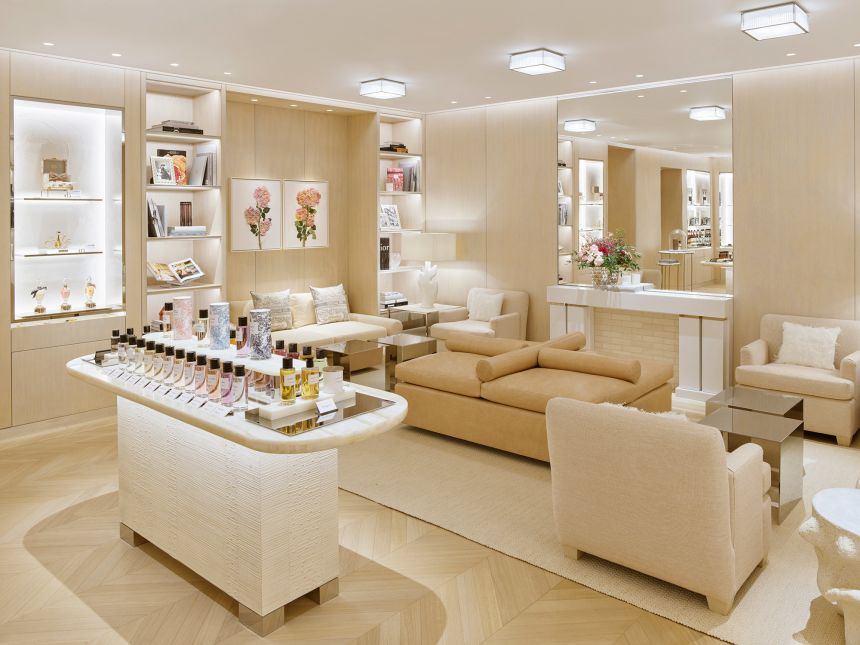After years of renovations, Dior has re-opened the doors to its flagship store in New York City. And unlike its other global boutiques, this one houses its first permanent spa.
Located on the corner of East 57th Street and Madison Avenue, Dior’s revamped space is designed by architect Peter Marino, a longtime collaborator of the French luxury house. And, spanning an expansive four floors, it showcases the brand’s womenswear, menswear, fine jewelry and more.

The re-opening comes amid a continued luxury downturn where brands have been looking to US shoppers to spur growth, with some (including Chanel, Louis Vuitton and Dolce & Gabbana) opening stores or signing new leases across the country. In 2024, Dior’s owner LVMH (which does not break out sales by brand) brought in €84.7 billion (about $98 billion) in revenue — 25% of which was derived from America, its second largest market alongside Europe, and after Asia.
Dior’s new spa, which sits on the top floor of the New York boutique, offers experiences exclusive to the store, such as a 90-minute, customizable “Haute Couture” facial developed by the brand’s master aesthetician Sarah Akram: a tailored blend of treatments for the face — including LED, microcurrent, cryotherapy and oxygen infusion — based on an assessment of the hydration, elasticity, collagen and pH levels of a customer’s skin.

Another feature of the spa is the “Light Suite,” where customers can choose from four light therapy skin treatments that have been developed in collaboration with Dr. François Duforez, a medical sleep specialist and the founder of the European Sleep Center in Paris. The latest light therapy treatment, “Happiness,” is aimed at stimulating serotonin and dopamine, which helps to balance mood and improve sleep — a nod to the perception of New York as “the city that never sleeps,” according to Dior.
Dior’s wellness offering — which also boasts infrared and re-energizing mattresses, weighted blankets and cryo-sleep masks, as well as a custom fragrance developed by renowned French perfumer Francis Kurkdjian — is a first in luxury where few other competitors operate their own spa. It comes amid the increased convergence of the luxury and wellness sectors, as affluent shoppers prioritize holistic health alongside opulent experiences. Now, fragrance labels such as Bella Hadid’s Orebella and Vyrao sell scents they claim can improve mood and focus, while high-end brands like Celine and Hermès have created yoga mats and other workout equipment, respectively.
For many people, good health is a precious asset — one that has arguably become more valuable than material possessions. With that in mind, the rise of wellness in luxury spaces “is no different from offering food and beverage within a flagship store,” observed Thomai Serdari, Luxury and Retail MBA director at the NYU Stern School of Business. In recent years, luxury labels including Gucci, Ralph Lauren, Prada and Louis Vuitton have delved into the culinary world, setting up cafes, restaurants and pastry shops globally.
Already, Dior operates nine spas globally, including those at five-star hotels such as Cheval Blanc and Hôtel Plaza Athénée in Paris. The brand has also invested in several immersive wellness experiences and retreats, including its three-time takeover of a luxury yacht (which it transformed into a floating spa on the Seine River) and collaboration with the Royal Scotsman, a high-end train operator in the UK.
The difference between those examples, according to Serdari, is the customers it reaches. “A beautiful pop-up targets the bottom of the pyramid, because it amplifies the power of the brand for the masses,” she explained. “Whereas the spa targets the top: It’s as luxurious as it gets, because it requires time and commitment from the customer.”

Dior’s expansion into wellbeing aligns with its broader mission to get people to “live” the brand in multiple ways beyond simply wearing its clothes: see its flashy 10,000 square-meter (107,600 square feet) flagship in Paris, which opened in 2022 after more than two years of renovations, that houses a gallery space, two eateries (Le Restaurant Monsieur Dior and Pâtisserie Dior) led by prominent French chef Jean Imbert, multiple gardens, a VIP client suite, and more.
Describing luxury flagships as “a domain of services,” Serdari noted that the biggest brands are “trying to figure out which type of services are most pertinent for their VIC (very important customers),” especially as a growing number opens dedicated spaces for their highest spending ones. For example, Chanel been opening private boutiques for its top clients, starting in key Asian cities. Balenciaga has a dedicated Haute Couture store in Paris. And last year, Bottega Veneta announced the launch of VIC residences, the first which opened in Venice and will gradually be rolled out across Asia and the US.
The convergence then of luxury and wellness initiatives is “an expansion of all the work that has been done in the VIC field,” said Serdari. “Every luxury brand now has a VIC establishment. Brands are providing an intimate environment with their clients, and they also understand what they would enjoy.”


